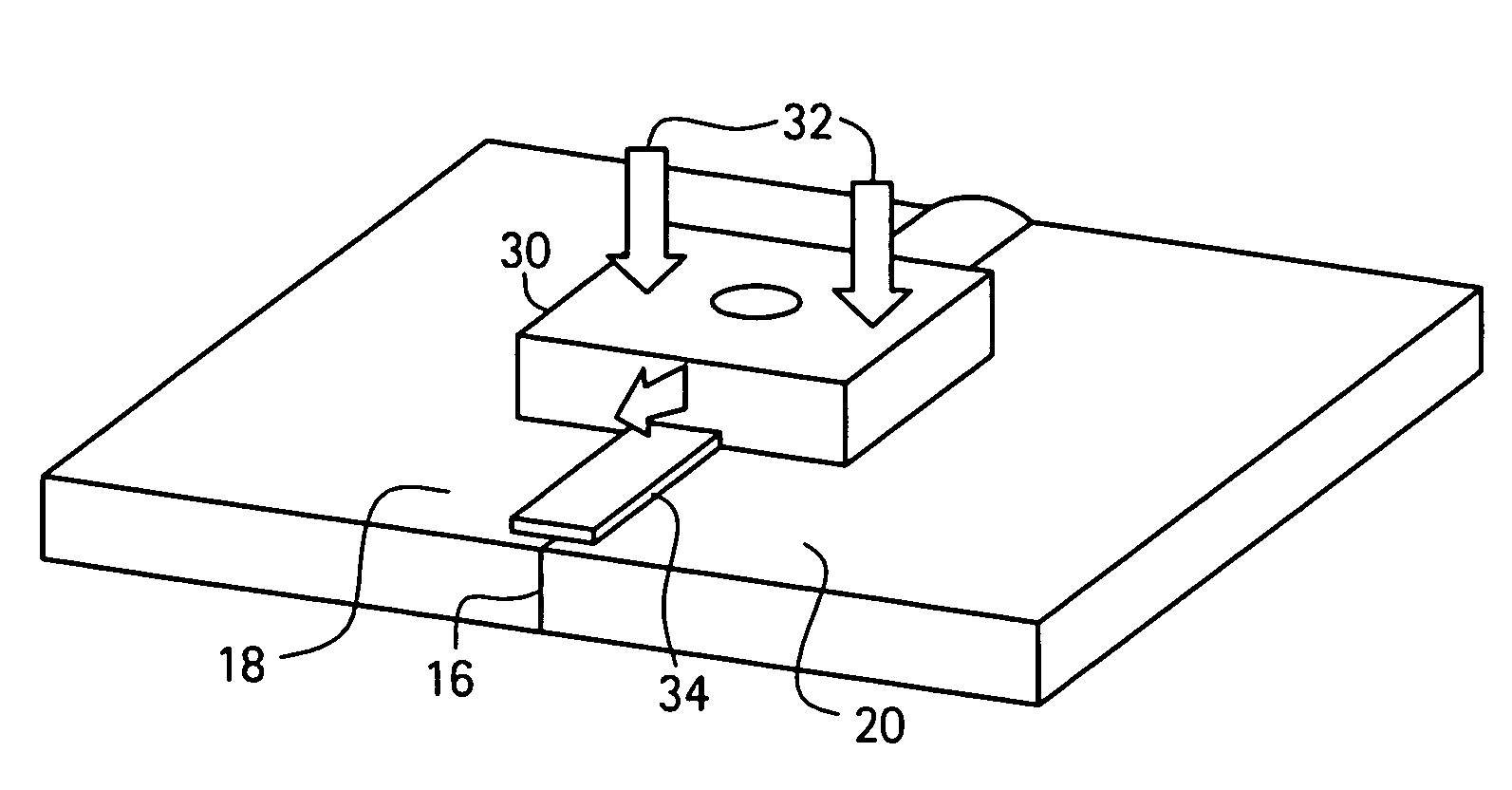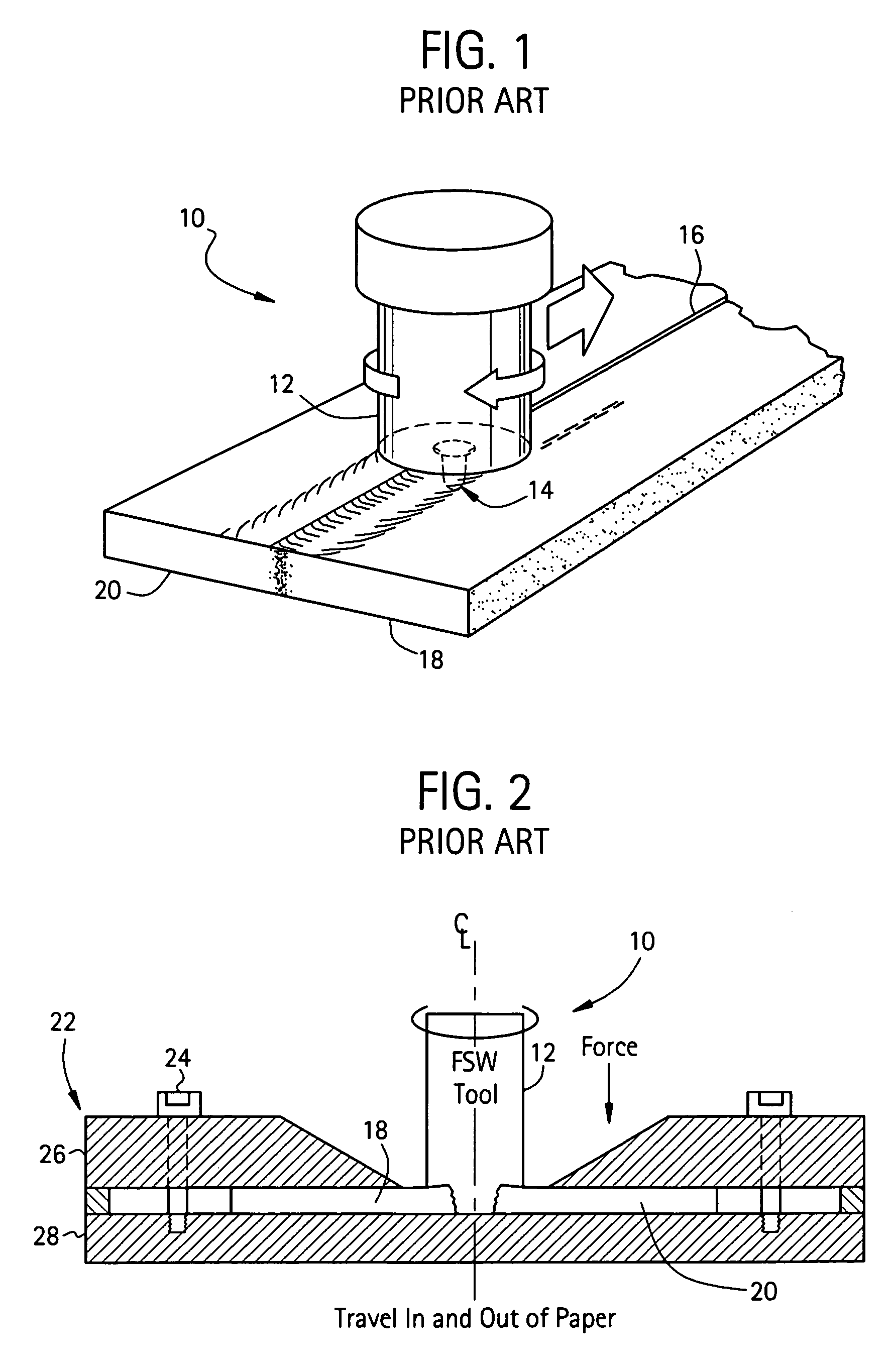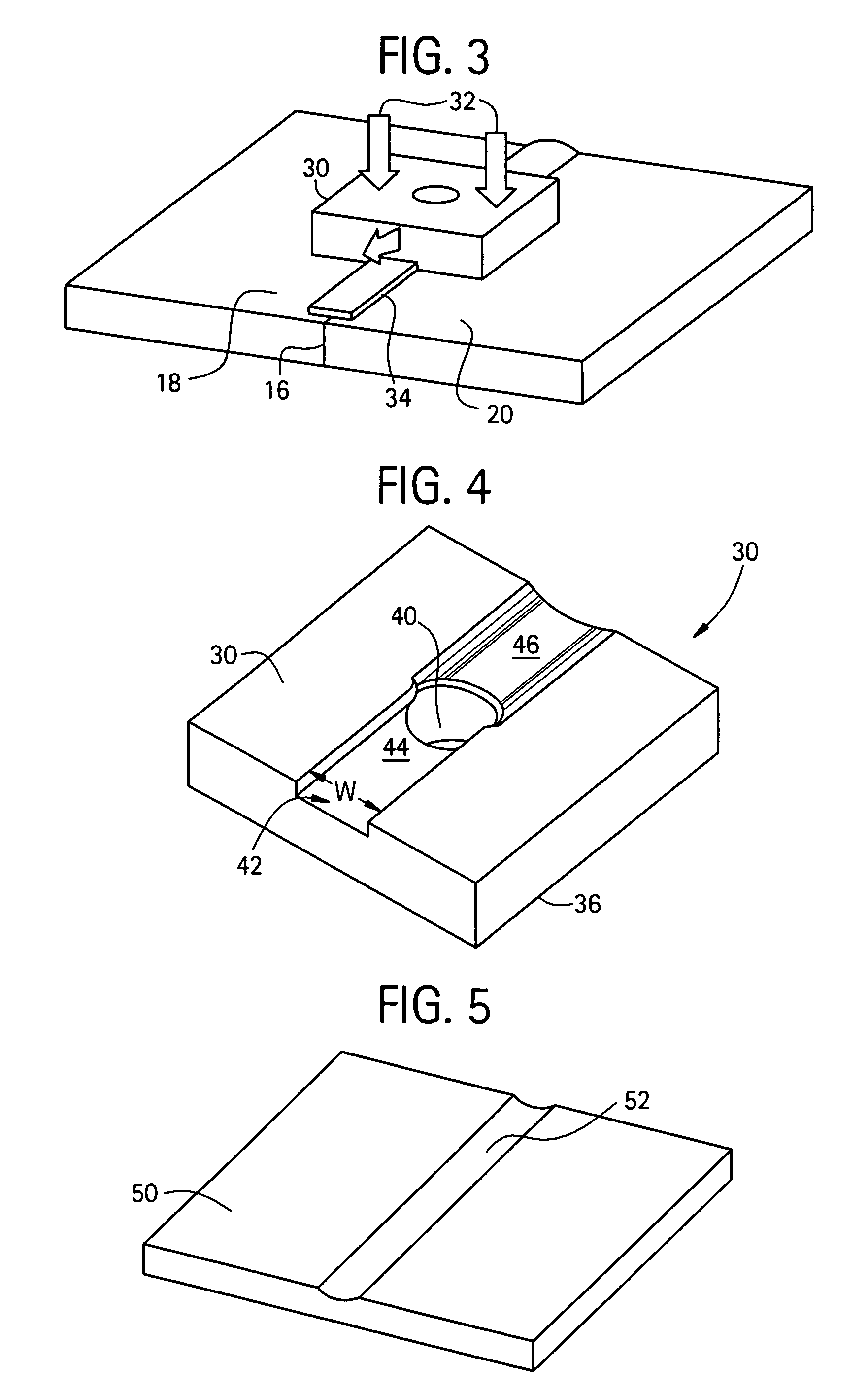Deposition friction stir welding process and assembly
a friction stir welding and assembly technology, applied in the direction of welding devices, soldering devices, manufacturing tools, etc., can solve the problems of general thinning of material along the weld line, not always feasible nor cost effective, and current methods that are not entirely effective at eliminating the exit keyhole
- Summary
- Abstract
- Description
- Claims
- Application Information
AI Technical Summary
Benefits of technology
Problems solved by technology
Method used
Image
Examples
Embodiment Construction
[0021]Applicant has discovered a process of friction stir welding that compensates for the production of flash and general thinning of material along the joint line during the solid-state joining process of two or more work pieces. The friction stir welding process in accordance with the present disclosure utilizes a so-called deposition friction stir welding process that generally includes depositing an additional solid-state material (also referred to herein as filler material) to the joint region along the joint line during the friction stir welding of two or more butted work pieces. As will be described in greater detail below, the additional solid-state material is introduced to the joint region in such a manner so as to contain the weld free surface as well as shape the resulting weld profile. As such, the resulting weld joint can be produced with a relatively thicker cross sectional thickness than prior art friction stir welding processes, thereby overcoming many of the above...
PUM
| Property | Measurement | Unit |
|---|---|---|
| temperature | aaaaa | aaaaa |
| melting point | aaaaa | aaaaa |
| thickness | aaaaa | aaaaa |
Abstract
Description
Claims
Application Information
 Login to View More
Login to View More - R&D
- Intellectual Property
- Life Sciences
- Materials
- Tech Scout
- Unparalleled Data Quality
- Higher Quality Content
- 60% Fewer Hallucinations
Browse by: Latest US Patents, China's latest patents, Technical Efficacy Thesaurus, Application Domain, Technology Topic, Popular Technical Reports.
© 2025 PatSnap. All rights reserved.Legal|Privacy policy|Modern Slavery Act Transparency Statement|Sitemap|About US| Contact US: help@patsnap.com



